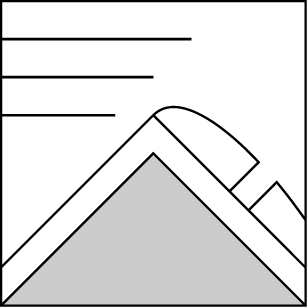Basic Information
Observation Details
Observation Date:
December 18, 2022Submitted:
December 18, 2022Observer:
SAC - Preuss, VandenBosZone or Region:
Banner SummitLocation:
Beaver Creek (All aspects; 6550-8700')Signs of Unstable Snow
Recent Avalanches?
YesCracking?
None ExperiencedCollapsing?
None ExperiencedSnow Stability
Stability Rating:
FairConfidence in Rating:
ModerateStability Trend:
SteadyBottom Line
Unstable snowpack test scores on layers of weak snow buried 2-3' deep continue to be concerning in this zone. While driving, we observed several natural wind slab avalanches that occurred in the past 12 hours. Some of these avalanches were big enough to bury you. The natural activity was occurring in the alpine of the Boulder and Sawtooth Mountains.
Advanced Information
Weather Summary
Cloud Cover:
Mostly CloudyWind:
Moderate , SWHigh clouds moved through for most of the day, with periods of direct sun and periods of milky light. Some large lenticular stacks were present on the western horizon. Winds were digging down much further than they typically do in this zone, transporting snow in some middle elevation terrain.
Avalanche Observations
| # | Date | Location | Size | Type | Bed Sfc | Depth | Trigger | Comments | Photo |
|---|---|---|---|---|---|---|---|---|---|
| 1 |
Boulder Peak S 10,600 |
D2 | HS | N-Natural | Appeared to be a wind slab. | None | |||
| 1 |
Galena Peak West arm NW 9,800 |
D2 | HS | N-Natural | None | ||||
| 1 |
Easley Peak W 10,000 |
D2 | HS | N-Natural | None | ||||
| 1 |
Pk. 10,018' SW 9700' |
D1.5 | N-Natural | None | |||||
| 1 |
Burn (North of Galena Pass) W 8800 |
D1 | HS | AS-Skier | Very small pocket that may have been remotely triggered by skiers. | None | |||
| 1 |
McDonald Peak E 9800 |
D1.5 | HS | N-Natural | None |
We observed a mini-cycle of natural wind slab activity in the Boulder Mountains as we drove back south. The timing on these isn't certain, they may have happened during the day today or perhaps overnight.
Snowpack Observations
We encountered a snowpack that had some similarities and some differences to the snowpacks that exist further south. Let's start at the surface, it's ugly!: diurnal recrystallization is really doing a number on the upper snowpack, which is intensely faceted in the upper 10-15cm. On solar aspects, radiation recrystallization crusts exist. The RadRx crust is 5-10mm down under small, well-developed facets. In sheltered terrain, this is all capped by 5-10mm SH. In exposed terrain, the wind is eroding and tossing around plenty of facets, exposing stiffer surfaces underneath. These are a bit irregular, but are also faceted. In short, all surfaces we observed will be reactive once loaded, at least in the short term.
The slab overlying the 11/27 weak layer is fairly similar to what has been observed further south (F at the surface grading to 1F+ at the base). The interval of dense snow at the base is a bit thicker than further south. The weak layer is different in character, but not in reactivity. On shaded slopes, the 11/27 is much thinner than our southern areas and presents as 1-2cm layer of FC. On solars, 11/27 presents as a pair of MFcr with FC in between. HS is a bit deeper in this zone; that seems largely to be attributed to more snow on the ground from October storms. We found a bit of SH at the 12/8 interface in one of our pits, but it appeared to have integrated well into the slab above. In other pits, 12/8 was difficult to pick out.
The snow on the ground (below the 11/27 weak layer/interface) was moist and made easy snowballs. We can still get over this problem, but we are definitely not there yet! I was surprised and impressed that the 11/27 had not shown much improvement compared to Lundy's ob in a similar area a week previous, immediately after the storm.
We had repeated propagating results in our ECTs with standard loading steps, which is a big red flag for me (Ben) on a weak layer buried that far down under a dense slab.
Pit 1: 6750', SSE, 1205hrs
HS 87cm, F->1F over 11/27 (2mm FC)
ECTP26, CPST 43/100 (end), CPST 24/100 (end) down 60cm. There was some roughness associated with the weak layer here, the second CPST result seemed more representative.
There wasn't an obviously looking layer associated with 12/8.
Pit 2: 7140', SW, 1245hrs
HS 90cm, F->1F over 11/27
ECTP after 31 hits (just an extra tap from the shoulder, not a hulk smash). The weak layer was rough here and we were digging on a steep (but short) slope above a road. I tried to do a few other ECTs but the whole snow package was just tumbling down the hill. I did not perform CPSTs because they are not particularly helpful on rough weak layers.
Pit 3: 7850', NE, 1315hrs
HS 125cm, F->1F over 11/27 (FC/SH combo); 12/8 was barely noticeable with no results.
ECTP27 x2, CPST 35/100 (end) down 80cm
Avalanche Problems
| Problem | Location | Distribution | Sensitivity | Size | Comments |
|---|---|---|---|---|---|
 Persistent Slab
Persistent Slab
|
|
Layer Depth/Date: 80cm/1127 Weak Layer(s): Nov 27, 2022 (FC) Comments: Sensitivity falls between Stubborn and Reactive. |
|||
 Wind Slab
Wind Slab
|
|
Comments: We did not directly encounter this problem, but natural avalanche activity in the Boulders and Sawtooths and public report of touchy slabs in the Banner Summit Zone yesterday (12/17) speak to its presence. |
Terrain Use
We planned to avoid any large, consequential avalanche terrain and terrain exposed to hazard from above. We saw no reason to change this plan.
